27th November 2007
 Wednesday, November 28, 2007 at 04:17AM
Wednesday, November 28, 2007 at 04:17AM
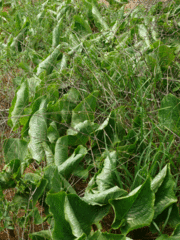
"Sea Grass-Cabbage" curled up in the heat
It was another blindingly hot day, and the river is low, wending its way through its new course of sandbanks and mud islands. Even the prolific “sea grass-cabbage plant” seemed to wilt in the midday sun - or perhaps it was just conserving moisture by curling up its leaves? It perked up again later on in the afternoon.
While I’m on the subject of this sea-grass cabbage, which has sprouted up in huge numbers across the property in huge numbers, favouring the shade under the trees it seems, we are mystified by it: we have never seen a flower, and we are wondering how on earth it reproduces, if not through a normal flower and seed process. We’ll keep watching…
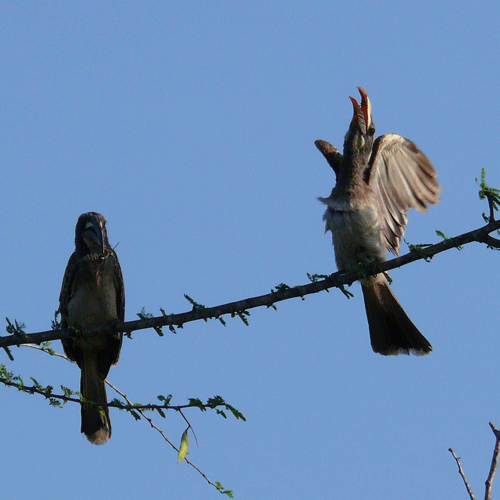
The hornbills seemed uninhibited by the heat – today I saw three different pairs courting within sight of the house: the Grey Hornbills, the Von der Deckens and the Red-billed. At one point, I had the Grey Hornbill courting pair and the Von der Decken pair in the same shot, inadvertently illustrating the difference in their feeding habits: the more predatory, predominantly carnivorous Grey Hornbill was proffering a large moth to its mate (while making a soft chit-chit noise), while the less predatory Von der Decken was offering a seed pod. Von der Deckens have been known to kill mice on occasion, but they mainly eat insects and fruit (as we saw when they were feeding in the commiphora thicket behind our house); the Grey Hornbill on the other hand is more of a carnivore, though it will also eat fruit.
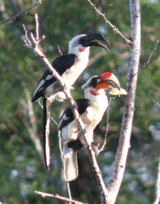
Von der Decken Hornbills courting
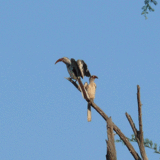
Red-billed Hornbills courting
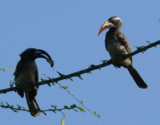
Grey Hornbills courting
All three different hornbill pairs were displaying, lifting their wings and throwing their heads back, and calling. It was such a lovely sight in the afternoon light, just outside our bedroom window.
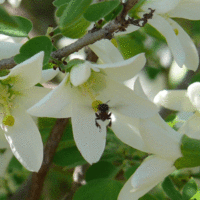
Close-up Bee on Bauhinia Flower
More and more flowers are blossoming – some of the Bauhinia late-bloomers are still in full flower – one bush I passed was emitting its delicate fragrance and attracting a few bees (not honey bees, though). It’s strange, but this year there have not been many bees at all. Each Bauhinia bush only emits its fragrance for one day, the same day its flowers are at their zenith, and normally on this day, the bush is covered with bees and other insects – not so this year.
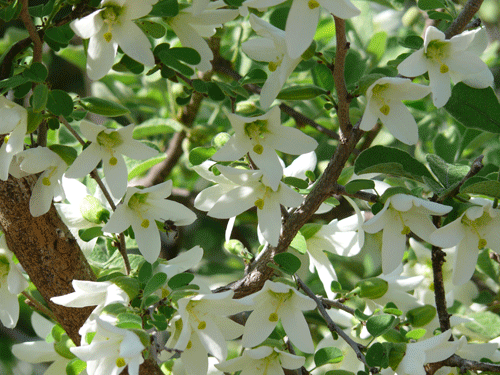
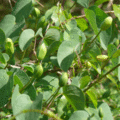
The mystery creeper with its expectant buds has not burst into flower yet – though the buds do seem more yellow than yesterday – perhaps this is an indication of the flower to come? Perhaps tomorrow all will be revealed…
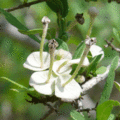
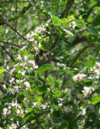 What I call the “white trumpet flower” is blossoming everywhere, in tight little bouquets, with a faint purple taint on some of the petals.
What I call the “white trumpet flower” is blossoming everywhere, in tight little bouquets, with a faint purple taint on some of the petals.
There were more Combretum in blossom too – I photographed one spray of flowers in backlighting (right), which I thought was particularly beautiful.
 The huge “asparagus plant” by the road has finally opened its leaves fully. It’s strange how it grew so tall before opening its leaves, while a smaller plant right by it had its open for days. The giant is a lot bigger than the specimens we have in our balcony garden – by the way, a third one has sprouted alongside the first two – all self-seeded.
The huge “asparagus plant” by the road has finally opened its leaves fully. It’s strange how it grew so tall before opening its leaves, while a smaller plant right by it had its open for days. The giant is a lot bigger than the specimens we have in our balcony garden – by the way, a third one has sprouted alongside the first two – all self-seeded.
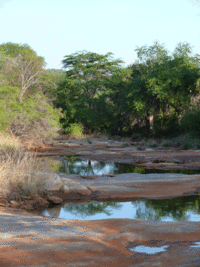
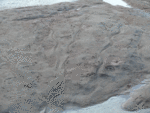
Crocodile tracks (note dragging tail marks)
In the evening, we took a walk from the house up the barely-flowing Mtito River. The trickle of water is literally only a few centimetres across, but there are stagnant pools left behind by the flood. There has been a lot of crocodile activity up the river, evidenced by their many footprints, so distinctive with the line formed by their tail-drag. Any number could be lurking in the pools.
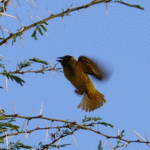
Black-headed Weaver landing on nest tree
The Black-headed Weavers (also known as Village Weavers) have a nesting colony in one of the Yellow Fever Trees in the middle of the river, and it was a hive of activity and chitter-chatter. The birds looked fabulous with their bright yellow feathers and fire-red eyes in the golden late evening light.
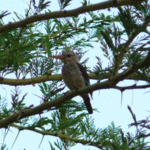
Brown-hooded Kingfisher
The Diederik Cuckoos were around – probably eyeing up the weaver nests, which they’ll try to parasitize. We also saw a Brown-hooded Kingfisher – a new one for the list – similar to the Grey-headed, but easily distinguished by the lack of rufous on the under-parts.
Some tadpoles had hatched in a tiny pocket of water underneath a rock-face. Another couple of hours, and the water would have dried up and all the tadpoles died, so my father scooped them up in his hands, and delivered them to a much larger pool, where they would at least have a decent chance of surviving and metamorphosing into adult frogs. We also saw a Tree Frog nest on the side of a rock – the frogs make a communal nest of froth, into which they lay their eggs – as the tadpoles hatch in the foam, they drop out into the water beneath. Normally Tree Frogs only make their nests over stagnant water, not a flowing river – perhaps this is a sad testament to the state of the Mtito River these days.
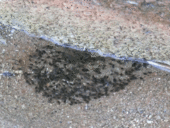
Tadpoles trapped in tiny pool
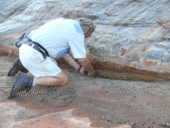
My father to the rescue!
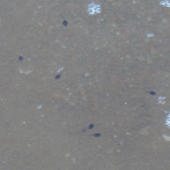
Tadpoles in new home
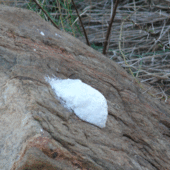
Tree Frog Nest
Amazing flowers were blooming along the river’s edge, like the hardy “rock plants” growing in and along the cliffs with their elegant white flowers (which to me resembled miniature lilies in shape) – they had just passed their prime but nonetheless were beautiful. There was a creeper with a white and yellow flower, and a shrub with a delicate violet blossom…I need to get back to my flower books to see if I can identify any of these species.
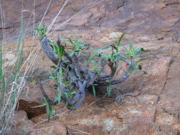
Rock Plant on cliff by Mtito River
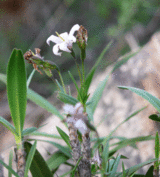
Rock Plant Flower
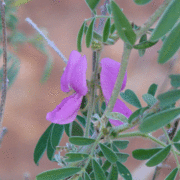
Violet Beauty
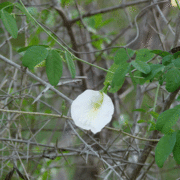
Butterfly Pea (creeper)
PM
I found one of them: The white-flowered creeper is clitoria ternatea, also known as the Butterfly Pea, which thrives in warm dry bushland (it’s in the right place here, then). You also get these flowers in blue, which are used for making dye.
I was thwarted by my identification efforts on the other flowers.
See more wild flower photos from Kulafumbi...
See more wild bird images, including Kingfishers, Hornbills, nesting Weaver birds and more...
Explore the Mtito River through more images - a small but pretty water course...
 Tanya
Tanya





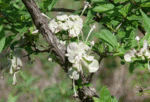
Reader Comments